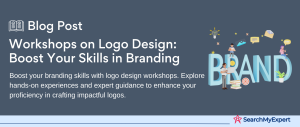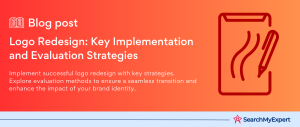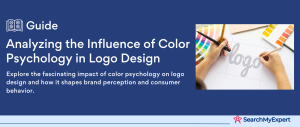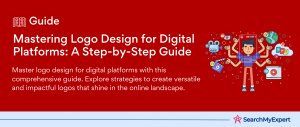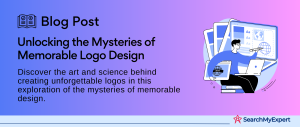The Evolution and Impact of Logo Design in Branding
Logos are more than just visual identifiers for brands; they are potent symbols encapsulating a company’s identity, values, and mission. In the dynamic landscape of branding, logos serve as the cornerstone, offering a first impression and establishing a lasting connection with the audience. Their evolution over time not only reflects artistic and design trends but also mirrors broader cultural and technological shifts.
The Transformative Power of Logos in Branding
A well-designed logo goes beyond aesthetic appeal. It embodies the essence of a brand, conveying its message and values at a glance. This transformative power of logos plays a crucial role in branding, as it aids in building brand recognition, trust, and loyalty. A memorable logo becomes synonymous with the brand itself, often evoking emotions and memories in consumers.
Adapting to Change: The Ever-Evolving Nature of Logo Design
Logo design is an ever-evolving art form, continuously adapting to the changing landscape of technology, culture, and consumer preferences. From the simplicity and minimalism favored in recent years to the bold and interactive designs emerging with new technologies, logo trends are a reflection of the times. Understanding these trends is crucial for brands to stay relevant and resonate with their target audiences.
Reflecting Cultural and Technological Shifts
As society evolves, so do the cultural and technological contexts in which logos exist. Changes in design trends often signal broader shifts in consumer behavior, technological advancements, and cultural values. For instance, the rise of digital media and mobile technology has led to simpler, more scalable logos that maintain their impact across various platforms and devices.
Embracing Minimalism in Logo Design
Minimalism, a trend characterized by clean lines, negative space, and simple geometric shapes, has taken the world of logo design by storm. This design philosophy prioritizes clarity and simplicity, stripping away unnecessary elements to focus on the essentials. The minimalist approach has been embraced by numerous brands, leading to some of the most iconic logos in the market.
Iconic Examples of Minimalist Logos
- Nike:
The Nike “Swoosh” is a paragon of minimalist design. Its simple, fluid line conveys motion and speed, perfectly encapsulating the brand’s focus on athleticism and dynamism. - Airbnb: Airbnb’s logo, known as the “Bélo,” represents a sense of belonging. Its sleek and straightforward design embodies the brand’s focus on community and connection.
- FedEx:
The FedEx logo, renowned for its clever use of negative space to create an arrow, symbolizes precision and forward movement, aligning seamlessly with the brand’s logistics and delivery services.
The Benefits of Minimalism in Logo Design
- Versatility:
Minimalist logos excel in versatility. Their simple design ensures they are easily recognizable and effective across various mediums, from digital platforms to print material. - Memorability:
The simplicity of minimalist logos makes them easy to remember. A straightforward design is more likely to stay in the minds of consumers, enhancing brand recall. - Timelessness: Minimalism eschews trends for classic simplicity, resulting in logos that remain relevant and impactful over time. This timelessness ensures that a brand’s visual identity doesn’t become outdated quickly.
The Rise of Gradient and Duotone Effects in Logo Design
In the contemporary logo design landscape, the use of gradients and duotone color schemes has emerged as a popular trend. These techniques offer a fresh and dynamic approach, adding depth, dimension, and an eye-catching appeal to logos.
Gradients: Adding Depth and Vibrancy
Gradients involve the gradual blending of colors, creating a smooth transition from one hue to another. This technique can infuse logos with a sense of vitality and energy. Gradients are particularly effective in digital mediums, where their full vibrancy and detail can be showcased.
Duotones: Simplistic Yet Striking
Duotone designs, on the other hand, use two colors to create a striking and harmonious visual effect. This approach offers a balance between simplicity and visual intrigue, making logos both memorable and distinctive. Duotones can also convey a brand’s personality through strategic color choices.
Notable Examples of Gradients and Duotones in Logos
- Instagram: Instagram’s logo is a notable example of gradient use. The vibrant blend of colors represents the platform’s lively and creative nature.
- Spotify:
Spotify utilizes a duotone effect in its logo and branding. The green and black color scheme is not only eye-catching but also aligns with the brand’s identity as a dynamic music streaming service. - Slack: Slack’s logo uses gradients to create a sense of depth, symbolizing connectivity and the integration of multiple elements – core aspects of the brand’s messaging.
The Charm of Hand-Drawn and Textural Elements in Logo Design
In recent years, there’s been a noticeable shift towards incorporating hand-drawn and textural elements in logo design. This trend stands out as a refreshing counterpoint to the digital precision of modern design, bringing a touch of personality, warmth, and authenticity to brands.
Hand-Drawn Elements: Personal and Unique
Hand-drawn logos are characterized by their bespoke and organic feel. These designs often appear less formal and more approachable, embodying a sense of individuality and human touch. This style is particularly appealing to brands that want to convey a sense of artisanal craftsmanship or a personal, relatable image.
Textural Elements: Adding Depth and Sensory Appeal
Textural elements in logos create a tactile sensation, giving the design depth and a tangible quality. Textures can range from subtle graininess to more pronounced brush strokes or paper-like effects, adding a layer of sensory appeal to the visual identity.
Noteworthy Examples of Logos with Hand-Drawn and Textural Elements
- Etsy:
Etsy’s logo features a hand-drawn script, reflecting its marketplace’s focus on handmade, unique items. The logo’s personalized feel resonates with the brand’s commitment to individual creativity and craftsmanship. - Starbucks:
The Starbucks logo, with its iconic mermaid, showcases textural elements that give it a rich, detailed appearance. This design adds a classic and enduring quality to the brand’s visual identity. - Pinterest:
Pinterest’s logo, with its script-like, handwritten typeface, embodies the platform’s personal and creative nature. It suggests a space for personal curation and sharing of ideas.
The Evolution of Logos: Embracing Dynamics and Animation
In the digital age, dynamic and animated logos have emerged as a groundbreaking trend in branding and design. These logos transcend static images, adapting and changing across various platforms and mediums, thereby offering a new dimension of interactivity and engagement.
Dynamic Logos: Adaptable and Versatile
Dynamic logos are designed to be adaptable, and capable of changing their form, color, or style depending on the context. This versatility allows brands to maintain a consistent identity while also showcasing different facets of their personality across various touchpoints.
Animated Logos: Bringing Logos to Life
Animation adds a layer of engagement to logos. Through movement, these logos capture attention and create memorable experiences. Animated logos can tell a story, evoke emotions, or convey complex ideas in a way that static logos cannot. They are particularly effective in digital mediums, where motion can be seamlessly integrated.
Brands Excelling with Dynamic and Animated Logos
- Google:
Google’s logo is a prime example of dynamism. The company frequently alters its logo on the search engine’s homepage to reflect current events, holidays, or notable historical figures, adding a sense of playfulness and relevance. - Pepsi:
Pepsi has embraced dynamic logo design by altering its famous globe logo’s appearance across different products and marketing campaigns, reflecting the brand’s adaptability and modern outlook. - Coca-Cola: Coca-Cola occasionally uses animated versions of its classic logo, especially in digital advertising, adding a sense of vibrancy and energy that aligns with the brand’s message of joy and togetherness.
Sustainability: A Vital Element in Modern Logo Design
The increasing global focus on environmental issues has significantly influenced logo design trends. Brands are now more inclined to incorporate sustainability and eco-conscious elements into their logos, reflecting their commitment to environmental responsibility and aligning with the values of a growing eco-aware customer base.
Logos as Symbols of Environmental Commitment
Incorporating sustainable elements in logos is more than a design choice; it’s a statement of a brand’s ethos. These logos often utilize earthy colors, natural motifs, or symbols that evoke a sense of environmental stewardship. By doing so, they communicate the brand’s dedication to sustainable practices and its role in fostering a healthier planet.
Eco-Conscious Logos: Leading Examples
- Patagonia:
Known for its environmental activism, Patagonia’s logo features a mountain skyline, symbolizing its connection to the outdoors and commitment to preserving natural landscapes. - Tesla:
Tesla’s logo, while simple, represents its revolutionary role in the automotive industry with a focus on sustainable energy. The sleek design reflects innovation and forward-thinking, aligned with the brand’s mission of eco-friendly transportation. - Whole Foods:
Whole Foods’ logo, with its green color palette and naturalistic font, communicates its focus on organic and sustainable food products. It resonates with consumers who prioritize environmental responsibility in their purchasing decisions.
Navigating the Future of Logo Design
In summary, the world of logo design is ever-evolving, with trends that reflect changes in technology, culture, and consumer preferences. We have explored the significance of minimalism, the vibrancy of gradients and duotones, the authenticity of hand-drawn and textural elements, the innovation of dynamic and animated logos, and the growing emphasis on sustainability and eco-conscious design.
Balancing Trends with Brand Identity
While staying abreast of these trends is essential for modern branding, it’s equally important for brands to maintain their unique identity. A logo is not just a design; it’s a reflection of a brand’s story, values, and vision. The challenge lies in integrating current trends in a way that enhances, rather than overshadows, this identity.
Embracing Trends in Your Branding Strategy
For businesses and designers, these trends offer exciting opportunities to reimagine and revitalize brand identities. Whether it’s through adopting minimalist principles, experimenting with dynamic animations, or emphasizing a commitment to sustainability, there’s a multitude of ways to infuse these trends into your branding strategy.
A Call to Action
We encourage you to reflect on these trends and consider how they can be creatively applied to your own branding efforts. Think about how your logo can not only capture the essence of your brand but also resonate with your audience and stand out in today’s dynamic market. The future of logo design is vibrant and diverse, and by embracing these trends, you can ensure that your brand remains relevant, memorable, and impactful.
Conclusion:
In this comprehensive overview, we’ve navigated through the dynamic and diverse world of logo design trends, from the simplicity of minimalism to the innovative realm of dynamic and animated logos, and the growing importance of eco-conscious designs. These trends not only reflect the changing aesthetic preferences but also underscore the evolving priorities and values of brands and consumers alike.
For any brand or designer, understanding and adapting to these trends is key to creating a logo that not only stands out visually but also resonates with the audience on a deeper level. However, the core lies in striking a balance between trendiness and timeless brand identity.
Make your mark in the market with
Logo Design Companies.
Table of Contents
Toggle

